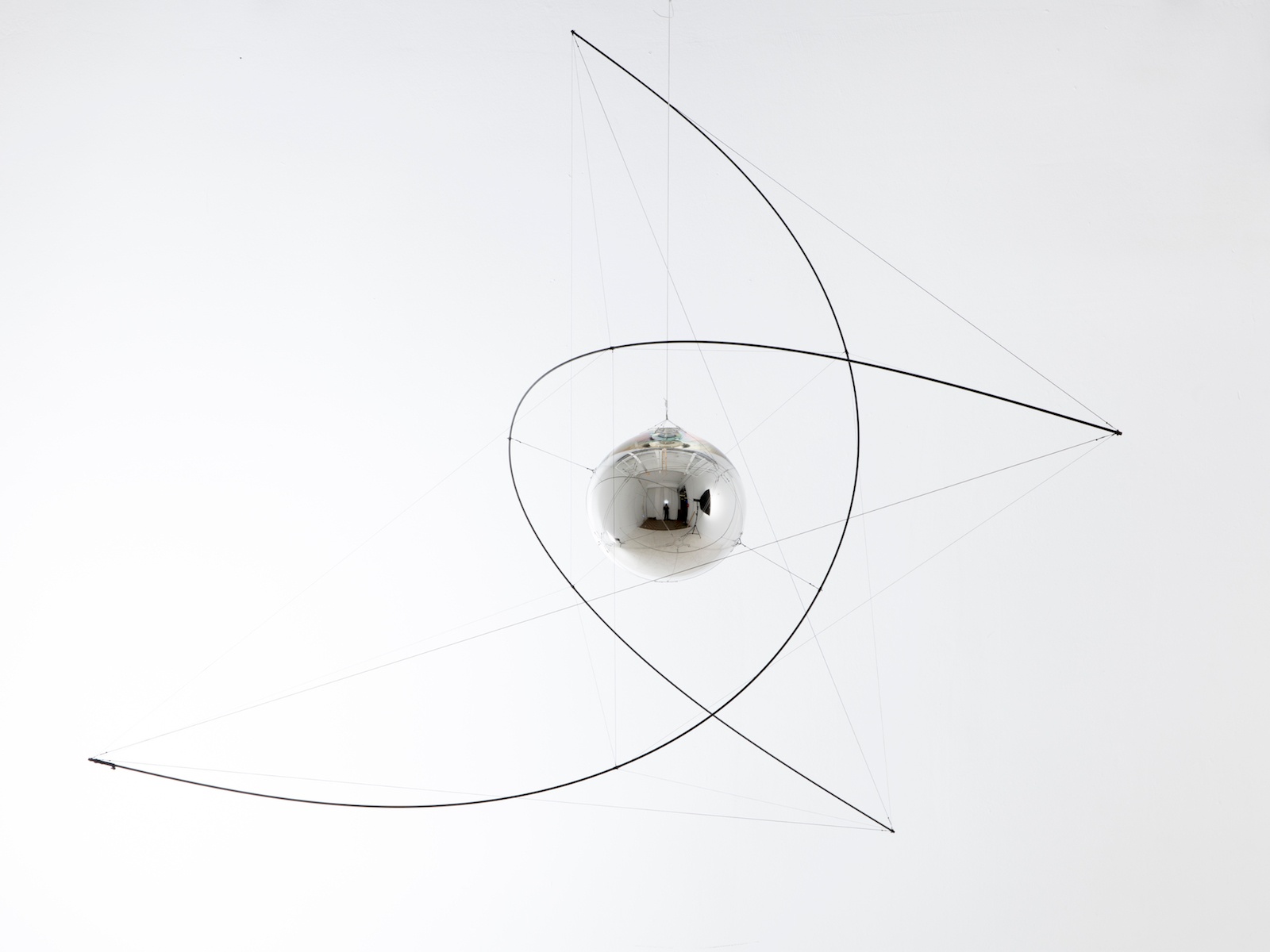Tomas Saraceno

Reminiscent of Alexander Calder’s modernist mobiles, RAY 8.3 is an expression of momentary balance. At once “intimate and minimalist” – as critic Wilson Tarbox writes – “but also implicitly vast,” it echoes both the universe’s smallest and largest structures: the electrons of an atom circling its nucleus, moons orbiting their planet. Made with the mutual tension of two carbon rods tied with nylon, the mobile is as much empty space as it is material structure, its form giving shape to the air in which it hangs. For all the weight of its silvered sphere, the work has about it an ethereal lightness.
b.1973, San Miguel de Tucumán
“Air became my material of choice. Air and tangible relations.” The conceptual fulcrum of Tomás Saraceno’s immaterial concerns is the relations of bodies in space. Trained as an architect, he is particularly attentive to the human scale and the ways in which the built environment can foster creative collaboration. His research extends to include such diverse disciplines as aerodynamics and arachnology, astrophysics, and radical ecology. But for all the complexities his works embody, in form they remain eloquent and spare. Some take the shape of discrete objects, others large-scale installations, community projects and floating sculptures. Most are transitory, few lasting. At the centre of all Saraceno’s work is a singular inquiry: What is our place in nature, in the world, in the cosmos? With elegant minimalism, the artist encourages the viewer “to reflect on their place within the infinitely complex networks that structure our existence” – Tarbox again – “from the minutiae of dust particles and the vibrations of spiderwebs to the collisions of galaxies in the universe.” By bringing attention to air, to space, to bodies in space (in air), Saraceno offers a poetic engagement with ecological consciousness – “awakening people,” he suggests, “to the interdependence of the different elements that make up the system in which we live – the interrelations between objects, natural phenomena and living creatures.”